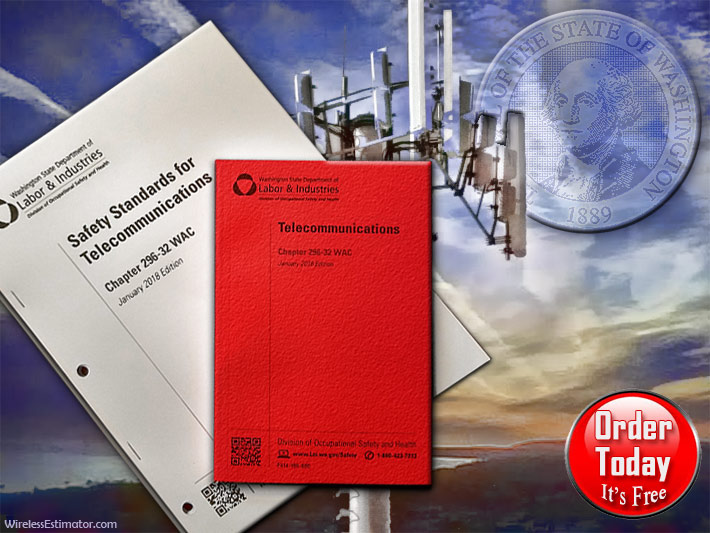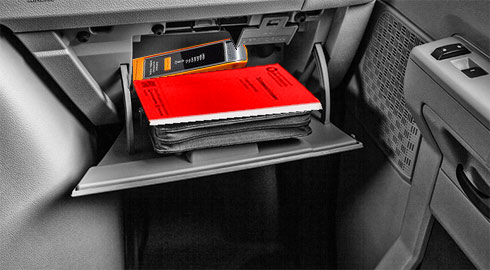
The State of Washington Department of Labor and Industries’ (L&I) extensive Safety Standards for Telecommunications became effective Jan. 1, 2018, and in order to get the rule into workers’ hands, the agency, at no cost to the individual or their company, is providing a downloadable copy of the 129-pages of rules in Chapter 296-32 WAC.
The department is also providing a unique opportunity to obtain the ‘Little Red Book’, a glove box-sized 207-page edition that will become a handy reference guide for telecommunications workers.

The ‘Little Red Book’ fits conveniently into a glove box for easy reference. They are being provided free of charge.
The fresh approach to ensure that workers are aware of the various safety requirements and will embrace them was championed by Anne Soiza, Assistant Director, Department of Labor & Industries, and her staff.
A challenge for all companies is to instruct their employees as to the many requirements for safely working in a multi-disciplined and dangerous profession. And although they do, the ‘Little Red Book’ is an easily accessible reference to detail and reinforce those needs.
Frequently, workers will have divergent beliefs as to the proper procedure for a task as well as important administrative requirements such as how many employees need to have valid first-aid and CPR certificates in the State of Washington if there are two or more workers in the field.
The book provides that answer, which is two employees, and it also can serve as one of the best resource vehicles for tailgate sessions.
The Washington rule also includes requirements for rigging plans, gin pole installation, use and inspections; base mounted hoist requirements, and helicopter lifting requirements from ANSI/ASSE A10.48. The standard also added requirements from ANSI/TIA 222G.
Although three state OSH representatives informed Wireless Estimator last year that they were carefully reviewing the standard for possible adoption, they haven’t moved forward with the process.
It’s possible that they are waiting to see if any copyright infringement lawsuits are filed.
On Oct. 4, 2017, L&I released comments provided to them regarding the proposed rulemaking and they showed a divide between Washington regulators and industry standards rulemaking groups, the National Association of Tower Erectors (NATE) and others.
L&I did not provide the names of individuals or organizations that offered their comments, but it was obvious to industry observers who the organizations were that voiced their concerns.
Some commenters said they believe that there are currently enough safety standards available and a new one could confuse people in the field regarding what regulations they should use to be compliant.
Some organizations and rule-making bodies’ representatives hurled copyright infringement allegations.
L&I replied that members of other industry consensus standard committees attended development meetings and “no copyright issues were ever brought up at a stakeholder meeting by members of any industry consensus standard committee.”
L&I has not been served a complaint regarding copyright infringement, according to a lawsuit search by Wireless Estimator.
North Carolina was the first state to pass a telecommunications standard, followed by Michigan’s 12-page standard.
To download or request copies of the ‘Little Red Book’, click here. The regular size standard can be found here.

















